What is WDM and its Working Principle?
2023-06-30
The technology of simultaneously allowing two or more optical wavelength signals to transmit information through different optical channels in the same optical fiber is called wavelength division multiplexing (WDM). WDM (Wavelength Division Multiplexing) is to combine two or more optical carrier signals of different wavelengths (carrying various information) at the sending end through a multiplexer (Multiplexer) and couple them into the same optical fiber for transmission , and at the receiving end, the optical signals of various wavelengths are separated by a demultiplexer (Demultiplexer), and then further processed by the optical receiver to restore the original signal.
To put it simply, you can see the figure below. In the traditional transmission mode, one optical fiber can only transmit an optical carrier signal carrying one type of information. If different services are required, countless different and independent optical fibers are required for transmission. . However, if there is a large amount of business information, a large number of optical fibers need to be laid for transmission, which poses a great challenge to wiring space and cost. The application of a WDM system can quickly solve the above problems. The WDM system can carry "service" signals in various formats, such as ATM, IP, etc., and multiple service signals can be transmitted through one optical fiber through multiplexing and demultiplexing technologies, which greatly reduces the amount of optical fiber. Ideal expansion means for expansion and development. When introducing new broadband services, such as CATV, HDTV, B-ISDN, etc., only one additional wavelength needs to be added.
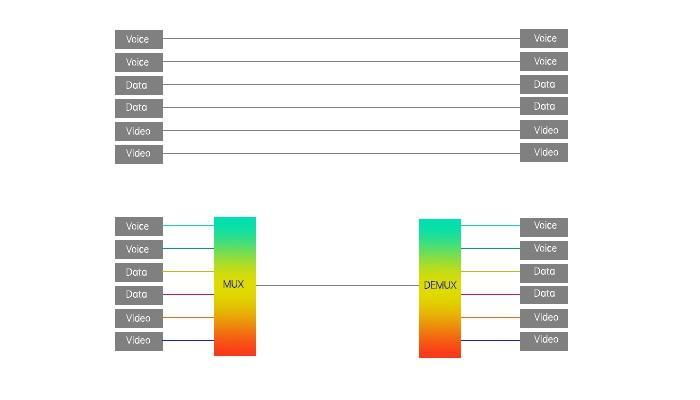
Basic Structure of WDM System
The basic composition of the WDM system is mainly divided into dual-fiber one-way transmission and single-fiber two-way transmission. Dual-fiber unidirectional means that all optical paths are transmitted in the same direction on one optical fiber at the same time, and different wavelengths carry different optical signals, which are combined at the sending end and transmitted through one optical fiber, and demultiplexed at the receiving end to complete multiplexing. The transmission of optical signals, while the opposite direction is transmitted through another optical fiber. The transmission in two directions is completed by two optical fibers respectively. Single-fiber bidirectional means that the optical path is simultaneously transmitted in two different directions on one main fiber, and the wavelengths used are separated from each other to achieve full-duplex communication between the two parties.
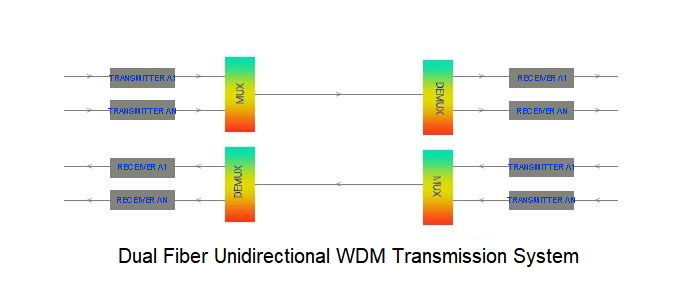
Dual Fiber Unidirectional WDM Transmission System
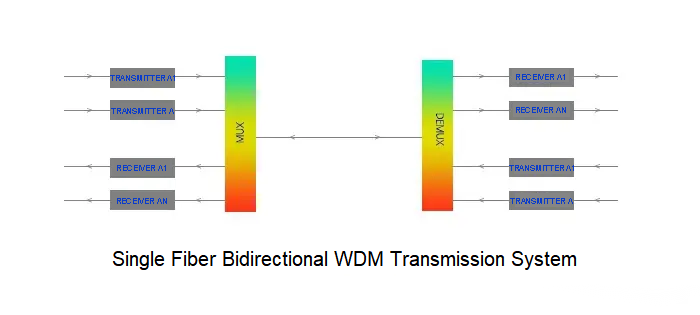
Single Fiber Bidirectional WDM Transmission System
The general WDM system is mainly composed of network management system, optical transmitter, optical relay amplifier, optical receiver, and optical monitoring channel.
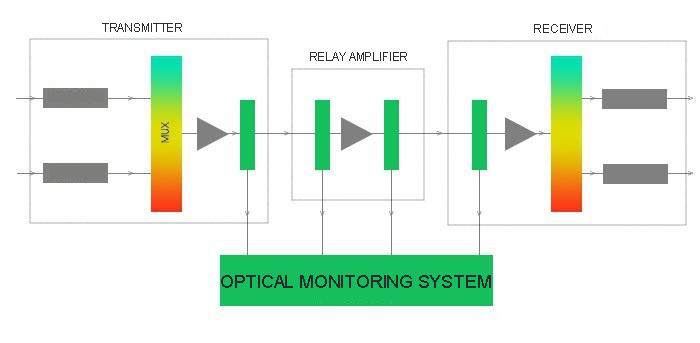
Schematic Diagram of Overall Structure of WDM System
The simple WDM system mainly includes transceivers, WDM wavelength division multiplexers, patch cords and dark fiber components.
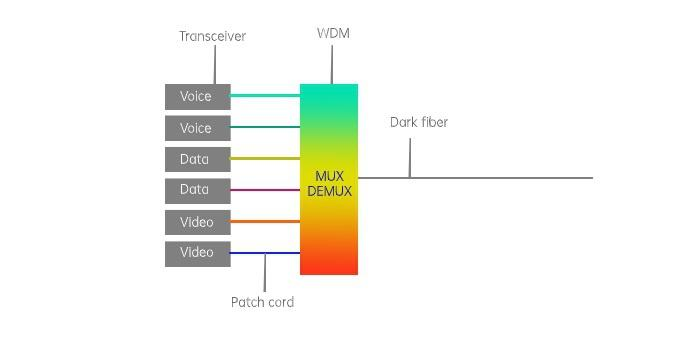
WDM system
In the whole WDM system, the optical wavelength division multiplexer and demultiplexer are key components in WDM technology, and their performance has a decisive effect on the transmission quality of the system.







